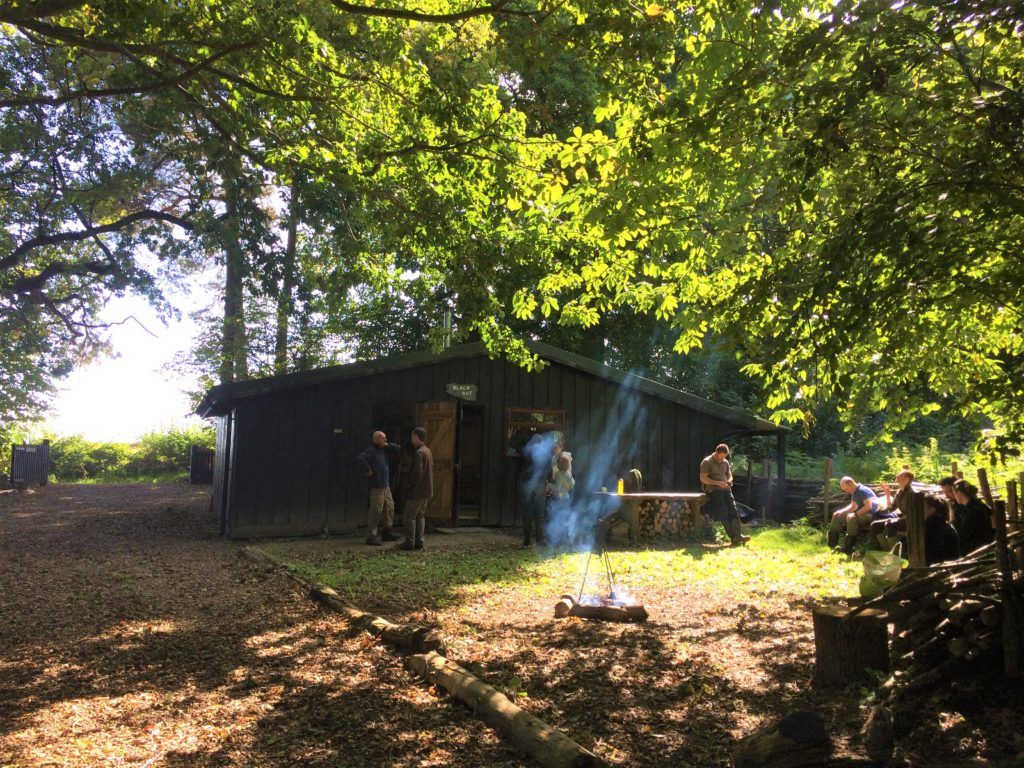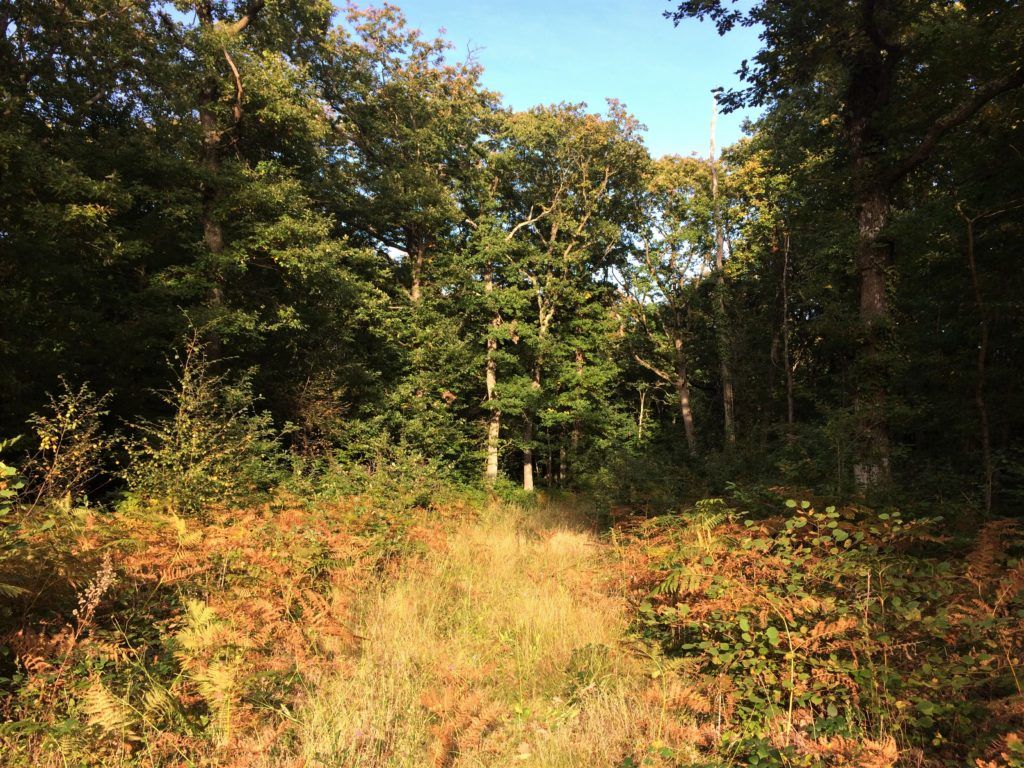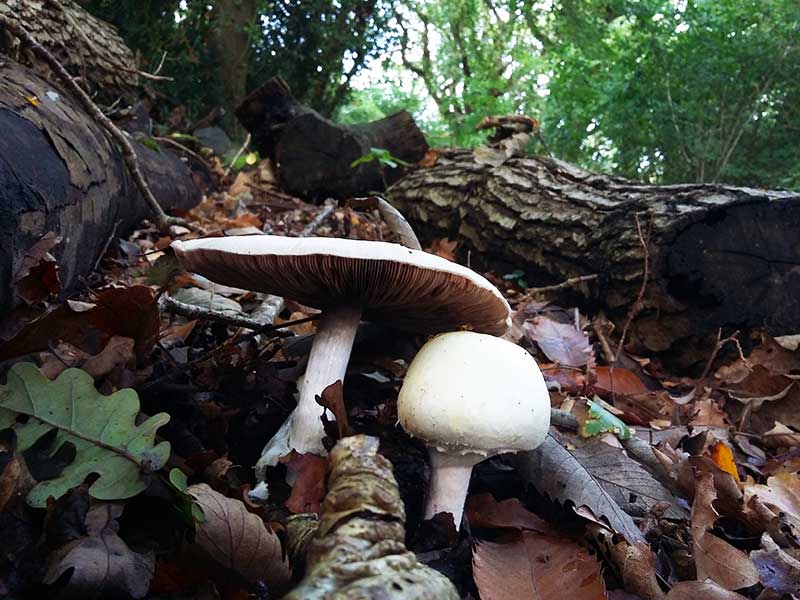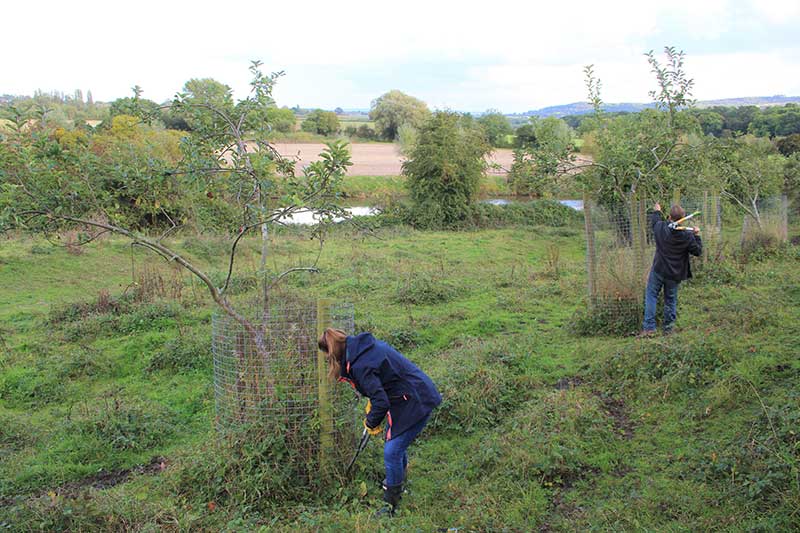This year autumn officially began on 23 September 2019 (MET office data). Laura, PTES’s Conservation Officer, is now preparing to care for our nature reserves over the colder months. Here she recounts the splendors of wildlife in autumn at Briddlesford Woods and Rough Hill traditional orchard.
Briddlesford
From coppicing to canopy
Briddlesford Woods is a large ancient, semi-natural woodland on the Isle of Wight, home to a diverse array of special wildlife including red squirrels, dormice and rare woodland bats.
We are currently planning late autumn and winter work at Briddlesford, coppicing hazel, mowing and cutting the rides, hedge laying. At Briddlesford the leaves are beginning to turn and fall and fungi are fruiting. The blackberries have almost finished and hazelnuts are beginning to ripen – these are both important food for dormice.


Briddlesford woods in the autumn sun 
Red squirrel at Briddlesford. Image credit Jim Baldwin
Jays are busy collecting acorns and caching them to eat later in the year when food is more scarce. The ones they bury and forget are given the chance to germinate and become the oak trees of the future. The jays behaviour helps the dispersal of acorns away from the tree, usually in open areas not closed canopy woodland.
Red squirrels are our native squirrel. They are threatened by competition with grey squirrels, loss of woodland habitat and disease. We are lucky that on the Isle of Wight (where Briddlesford is located) there are no grey squirrels so the red squirrels here are safe from competition and disease. Squirrels don’t hibernate, so autumn is a good time to see them as they spend a lot of time collecting nuts, berries, bark and fungi for the winter when they’re less active.
Managing the woodland for wildlife in autumn
Coppicing is a traditional way of managing woodland, cutting trees repeatedly and allowing them to grow back from the stump. At Briddlesford, hazel is cut on a rotational basis, every 15-20 years which allows the trees to get to an age where they produce a good nut crop for dormice and red squirrels.

Briddlesford fungi 
Main ride at Briddlesford
Cutting the hazel also allows light to reach the woodland floor and this makes way for a succession of plants to grow, which in turn supports butterflies and other insects.
Rides (open pathways through the woods) are mown along the centre to maintain and keep them open. They provide access to the woodland on foot or with vehicles, and are extremely valuable for wildlife. Our rides are managed in 3 tiers, short grass at the centre, longer grass either side of this and then coppiced hazel / scrub next to the woodland. Keeping a strip of short vegetation in the centre promotes the growth of a wide variety of flowers.
Rough Hill orchard
Rough Hill is a beautiful small, traditional orchard on the banks of the River Avon. It contains around 40 old apple trees, 65 young apples and 25 young plum trees and is a haven for insect life. Autumn at rough hill is a time for picking apples, clearing tree cages, cutting any brambles and scrub that have encroached on the grassland and planning in winter work.

Steve picking apples 
Ellis Bitter apples 
Laura and Steve clearing tree cages
Apple picking
We have 25 varieties of apple at Rough Hill including the well-known Bramley. We have a few trees at Rough Hill that are particularly prolific in producing these tart cooking apples. Other varieties include Ellis Bitter, a sharp cider apple, Worcester Pearmain, a lovely local eater, and Betty Geeson, a firm favourite with the PTES staff.

Hawthorn berries 
Dexter’s cow 
Comma butterfly
Managing the orchard for wildlife in autumn
October is generally when the grassland gets mown or flailed. Timing is key, it needs to be done as late as possible to allow wildlife to finish using the scrub e.g. (birds nesting and eating blackberries) but not so late in the autumn that it is too wet for the tractor to be able to safely navigate the steep slopes of our unusual orchard. We do this to help control bramble growth and promote species rich grassland. Although we have cattle grazing here, they are at a low stocking rate so we need to do additional mowing.
There are currently 7 Dexter’s cows grazing the orchard floor to help prevent growth of woody plants and scrub and improve floral diversity. Cattle grazing gives more of a diverse structure to the sward than mowing and can create tussocks which add habitat features for wildlife particularly invertebrates and small mammals.
Image credits: Emily Marnham, Megan Gimber, and Laura Bower
